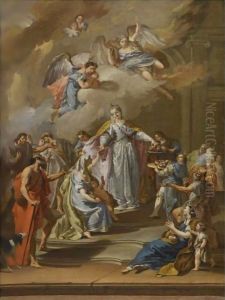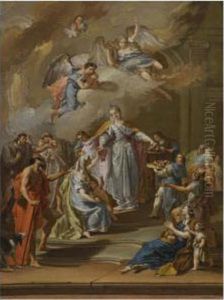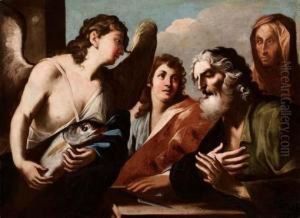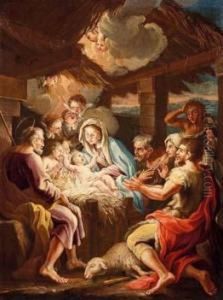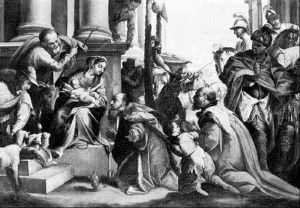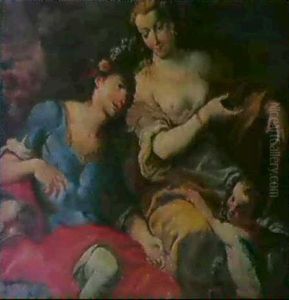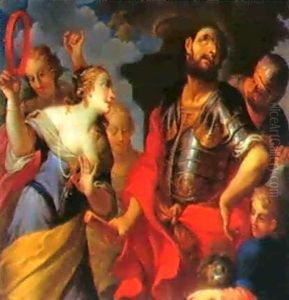Francesco Pittoni Paintings
Francesco Pittoni, not to be confused with his more famous relative Giovanni Battista Pittoni, was an Italian artist born in 1655 in Venice, Italy. While Francesco's life and works are not as well-documented as those of Giovanni Battista, he is known to have been active during the late 17th and early 18th centuries. His contributions to the art world, particularly within the Venetian school, lie primarily in the realm of religious paintings and frescoes.
Francesco Pittoni came from a family with a strong artistic tradition. This environment likely provided him with the necessary training and influence to pursue a career in art. However, there is little information regarding his apprenticeship or early work. Like many artists of the period, he would have learned the fundamentals of drawing, composition, and color through a workshop, which was the standard for artistic training at the time.
His work often depicted biblical scenes and saints, reflecting the Catholic heritage and the demand for such artwork in churches and religious institutions. Francesco's style would have been influenced by the prevailing Baroque sensibilities of the time, characterized by dramatic light, rich color, and a dynamic sense of movement. Yet, the scarcity of surviving works and documentation makes it difficult to fully assess his contribution to the art of the period or to highlight specific masterpieces.
Francesco Pittoni's death occurred in 1743. Due to the overshadowing fame of Giovanni Battista, Francesco's legacy is not as prominent in art historical discourse. Nevertheless, any mention of him pays homage to the broader context of the Venetian artistic environment, which fostered numerous talents and contributed significantly to the development of European art. His works, to the extent that they can be identified and attributed to him, help to paint a more complete picture of the artistic output of Venice during a period of rich cultural production.
